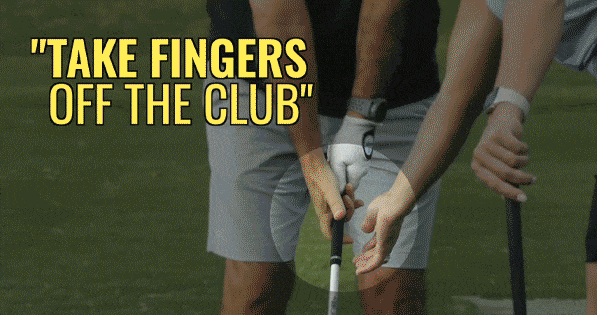The Basics of Clock Method
Randy explains that the clock method involves visualizing your swing as different positions on a clock face. He demonstrates the technique by starting with a half swing, going from 9 o’clock to 3 o’clock. This represents a shorter swing with less power.
Next, he progresses to an 8 o’clock swing, where the club is parallel to the ground. He emphasizes that the key to this method is maintaining a consistent tempo throughout the swing. Instead of trying to accelerate through the swing, Randy advises keeping the speed going back the same as the speed going through.
By focusing on maintaining a constant grip pressure and tempo, you can eliminate inconsistencies and mis-hits. Randy demonstrates this by showing how a shot from 8 o’clock to 4 o’clock with a 56-degree or sand wedge can be followed by a shot from 7 o’clock to 5 o’clock, and then a shot from 9 o’clock to 3 o’clock. Each swing maintains the same tempo and grip pressure, resulting in consistent distances.
Practicing the Clock Method
To practice the clock method, Randy suggests recording the distances for each club and swing position. For example, with a 56-degree wedge, you can record the distance for an 8 o’clock to 4 o’clock swing, a 7 o’clock to 5 o’clock swing, and a 9 o’clock to 3 o’clock swing. This allows you to have a reference for each club and swing position, helping you control your distances and trajectories.
By using the clock method and practicing with different clubs, you can improve your chipping technique and become more consistent with your pitch shots. This method simplifies the process and allows you to focus on maintaining a consistent tempo and grip pressure.








